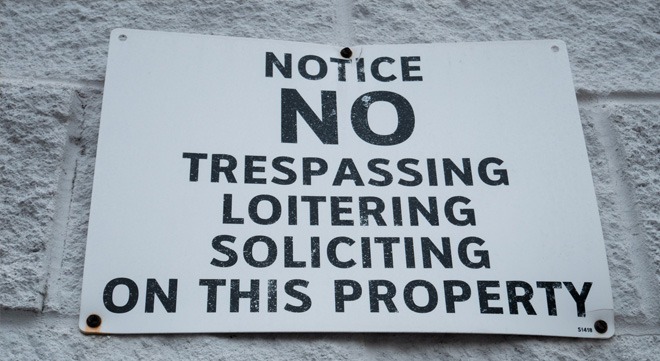In recent years, South African courts have upheld the enforceability of disclaimer notices, provided they meet specific legal requirements.
A disclaimer notice is a contractual clause that exempts one party from liability for losses incurred by another party. Businesses frequently use these notices to mitigate or limit risk.
The long-standing Supreme Court of Appeal (SCA) case of Durban’s Water Wonderland (Pty) Ltd v Botha and Another established the necessary principles for relying on a disclaimer notice to exclude liability.
The SCA developed a two-part objective test to validate a disclaimer notice for excluding liability. First, it must be determined whether reasonable steps were taken to make the notice clearly visible, ensuring that patrons are aware of and prepared to be bound by its terms. The SCA stated that the notice itself must be prominently displayed in a place where one would ordinarily expect to find such a notice. Second, the language of the notice must be clear and unambiguous – the terms must be easy to understand and have only one meaning or interpretation.
The principles established in Durban’s Water Wonderland were further reinforced by the Consumer Protection Act (CPA).
Section 49 of the CPA addresses clauses that limit a supplier’s risk or liability. It prescribes that “any notice to consumers or provisions of a consumer agreement that purport to limit in any way the risk or liability of the supplier or any other person must be drawn to the attention of the consumer in a manner and form that satisfies the formal requirements of… plain language… that is likely to attract the attention of an ordinary alert consumer, having regard the circumstances”.
The CPA does not prohibit the use of disclaimer notices entirely, but it does invalidate those that seek to exclude liability for gross negligence. Section 51(1)(c)(i) specifically prohibits any terms that purport to exempt a supplier from liability for loss sustained as a result of gross negligence.
Siyamanga v Balcony Shisa and Chill case
In the recent case of Siyamanga v Balcony Shisa and Chill (handed down on 27 January 2025), the High Court in Johannesburg delivered a judgment that aligns with these principles and legislation.
The plaintiff instituted an action against the defendant, a restaurant, alleging that she sustained injuries after slipping and falling on the defendant’s premises on 9 April 2022.
The central issue was whether the defendant could rely on a disclaimer notice to exclude liability for the plaintiff’s injuries. The court’s analysis was guided by the principles established in Durban’s Water Wonderland.
The court emphasised that the language of the disclaimer must be clear and unambiguous. In this case, the disclaimer notice explicitly stated:
“DISCLAIMER OF LIABILITY
All persons entering these premises, or using any amenities or facilities on these premises, do so entirely at their own risk and subject to the following conditions:
The owner, manager and/or operator of these premises, amenities and facilities and its directors, officers, employees, agents and representatives do not accept any liability whatsoever for any injury or death of any person or the loss or destruction of or damage to any property, whether arising from fire, theft or any other cause whatsoever and by whomsoever caused or arising from negligence or gross negligence or wrongful acts or omissions of the owner, manager and/or operator of the restaurant or its directors, officers, employees, agents and representatives.”
The court found that the disclaimer’s language was unambiguous, meaning its terms had to be upheld.
The court then assessed whether the disclaimer was properly incorporated into the contract between the plaintiff and the defendant. This required determining whether the plaintiff had actual knowledge of the disclaimer or acted in a way that reasonably led the defendant to believe that she had accepted the terms of the contract. The defendant bore the onus of proving that the plaintiff was aware of and had accepted the disclaimer’s terms.
The plaintiff testified that she did not see any disclaimer notice when she entered the premises on 9 April 2022 but acknowledged seeing the notice when she returned on 30 April 2022.
The defendant presented two witnesses, both of whom testified that the disclaimer notice was prominently displayed at the entrance to the premises on the date of the incident. The court found these witnesses to be credible because their testimonies contained no material contradictions.
Applying the objective test, the court found that the defendant took reasonable steps to bring the disclaimer to the patron’s attention.
The disclaimer was prominently displayed at the entrance, where patrons would reasonably be expected to see it. To this end, the court was of the view that the defendant had taken all reasonable steps to ensure that patrons were aware of the disclaimer. This included the size and visibility of the notice, as well as its placement at the entrance.
The plaintiff failed to provide sufficient counterevidence to dispute the defendant’s claims that the disclaimer was displayed and that reasonable steps were taken to inform patrons. The court noted that the plaintiff did not call her companion, who was present on the day of the incident, to testify, which could have corroborated her version of events.
The balance of probabilities therefore favoured the defendant’s version that the disclaimer notice was prominently displayed and that reasonable steps were taken to bring it to patrons’ attention. Notably, the court did not rely on or refer to the similar provisions in the CPA, likely because this issue was not raised in the pleadings.
The Siyamanga judgment follows similar reasoning to Stearns v Robispec (Pty) Ltd, where the court found that reasonable steps were not taken to bring a disclaimer notice to patrons’ attention. Despite the presence of notices with large script headings at the defendant’s entrance, the court found that the disclaimer’s wording was written in small script and lacked a distinct heading, making it inconspicuous. The court concluded that the defendant had not taken sufficient steps to ensure patrons were aware of the disclaimer terms.
Businesses seeking to limit liability through disclaimers should ensure that disclaimers are prominently displayed where patrons can reasonably be expected to see them. Clear, unambiguous language should be used to avoid legal challenges. Photographic or documentary evidence should be retained to prove the disclaimer’s visibility. Disclaimers must comply with the CPA, ensuring they do not attempt to exclude liability for gross negligence.
The Siyamanga case reaffirms that properly drafted and displayed disclaimers can effectively exclude liability, provided that businesses comply with established legal principles.
This article was written by Sandra Sithole, a partner at Webber Wentzel, and Rethabile Shabalala, a senior associate at the same law firm.
Disclaimer: The views expressed in this article are those of the writers and are not necessarily shared by Moonstone Information Refinery or its sister companies. The information in this article is a general guide and should not be used as a substitute for professional legal advice.



